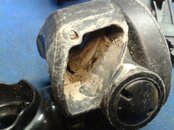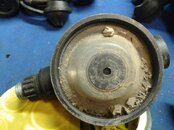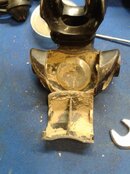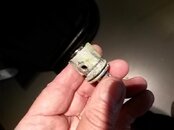This is false. There is a price the shop wants to sell at and there is a price the buyer is willing to pay. If both prices match then a transaction occurs and if they don't then it doesn't. A customer cannot screw a service provider into bankruptcy because the provider can always say no. A customer can also say no IF he is given the actual price before the transaction occurs. BUT if the provider mislead the customer about the price then a transaction occurs which should not have.
---------- Post added April 19th, 2014 at 02:12 PM ----------
I thought the reg actually fell apart not that it just failed.
if the provider is desperate for business, they may be tempted to sell at less than the required profit margin to stay in business. Trying to create cash flow. Seen it happen in a number of industries where the business is struggling. People do silly things in desperate times.
Yes that's what happened to me regarding the wing/tank hire. It was suggested to me by the instructor he could get some gear from the LDS for the course. I trusted him and that the gear would be hired out at the normal sort of rates. It wasn't until the end of the course and I went to pay that I was given the $300 hire cost for 2 days hire.
Yes the end of the reg fell off, the environmental seal and cap along with spacer rings.
Also not all the O rings were replaced with Viton O rings. Some were still the Nitrile O rings, I suspect as they were odd sizes. The reg is an AquaLung Legend. In the end port it has an O ring that when measured is 11mm ID and 2mm thick, not an imperial O ring and it was still the Nitrile, also inside there is a flat O ring with a concave face (backup O ring), this too is Nitrile. I suspect no one makes them in Viton it would be a special O ring.
On that note, what about the diaphragm? We are taught in O2 Clean class that all items must be non Nitrile/rubber as they are fire risk, yet the reg diaphragm is made of what appears to be a rubber compound, along with this special flat O ring.
Thus my query is; should only piston regs be used for 100% O2 on the basis that all components can then be Viton (as all sealing components are O ring in design?). If so, why then do LDS supposedly O2 clean regs that should not be used for 100% O2? Why do O2 clean courses not say this?







